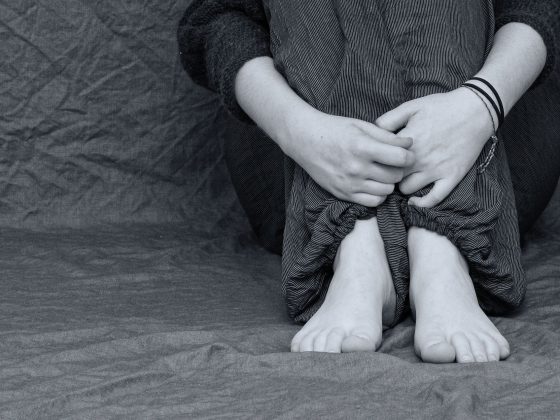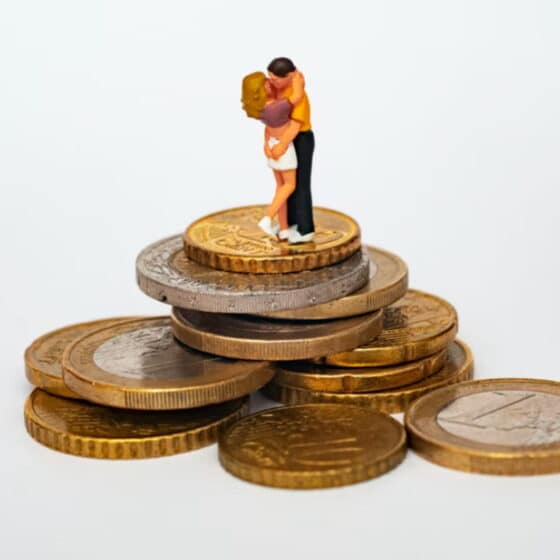We tend to idealize and romanticize relationships where the couple is always together, has all the same interests, hangs out with the same friends, and doesn’t have a life outside of the relationship. This isn’t a sign of companionship, love, or total compatibility, though. Codependency can take a toll on both partners’ mental health and completely destroy the relationship from within.
This guide will show you how to stop being codependent and instead build a strong, healthy relationship. If you recognize signs of codependency in yourself or your partner, you’ve come to the right place.
What Is Codependency?
In a codependent relationship, one person needs the other, while the other needs to be needed. One partner will change their behavior and life for the sake of pleasing the other. For that partner, self-worth and self-esteem come from sacrificing themselves for their boyfriend/girlfriend.
Though we’re talking about codependency in romantic relationships, it can be present in any kind of relationship, including friendships and family relationships. It’s also important to note that codependency often comes with physical and emotional abuse.
Codependent Behavior Examples
- Caretaking: feeling like you need to take care of someone all the time and that something bad will happen if you don’t
- Low self-esteem: needing your partner’s approval, to be of service to have a sense of purpose
- People-pleasing: feeling like you have no choice but to make others happy all the time, disregarding your own wants and needs
- No boundaries: not enforcing, respecting, or even recognizing boundaries
- Low self-image: defining yourself only in relation to your role in the relationship
- Lack of communication: feeling like you can’t express your own needs and wants because they’re not as important as your partner’s
- Depending on each other: one person needs something (materially or emotionally) while the other needs validation
Differences Between Dependent and Codependent Behavior
Being dependent on your partner to an extent is normal in any relationship, but boundaries need to be set somewhere. You’re still your own person even when you’re dating someone.
Am I Codependent?
This table will help you see the difference between dependency and codependency more easily.
| DEPENDENCY | CODEPENDENCY |
|
|
How to Stop Being Codependent
The first step, of course, is recognizing that you have a problem. From here, you’ll need to take small steps to separate yourself from your partner, at least for a little while.
Both of you should begin by finding interests and hobbies outside the relationship. If you don’t know what you like or where to start, take some time to experiment with different hobbies and see what sticks. Here are some ways to stop being codependent and begin spending time by yourself:
- Reading
- Painting
- Dancing
- Photography
- Cooking/baking
- Exercising
- Joining a course on a subject you find interesting
- Yoga
- Hiking.
Therapy can also be very beneficial. Both individual and couples therapy can work, but perhaps it’s better to start with individual therapy. That way, you can work on the relationship you have with yourself more easily. In order to have a strong and healthy bond with your partner, you need to develop one with yourself first.
A licensed professional counselor can help you recognize the harmful patterns you exhibit in relationships and advise you on how to change or end them. For the enabler, therapy can help eliminate the need to be needed and make them realize their partner doesn’t need to put them in the center of their world.
What to Aim for in Any Relationship
Maintaining a sense of self in any relationship is important for it to work. You can still value the bond you have with your partner while not letting the relationship envelop you whole. The goal is to achieve interdependence, to have a life outside the relationship, but still meet your needs as well as your partner’s.
Unlike in a codependent relationship, each partner is respectful of the other, and neither demands anything of the other. Some characteristics of interdependence are:
- Active listening
- Healthy boundaries
- Time for personal interests
- Spending time with your own friends
- Healthy self-esteem
- Open communication
- Engaging with each other
- Making sure both partners feel like they can be vulnerable.
Building an interdependent relationship can only work if you know who you are from the very beginning. It’s important to emphasize that interdependent relationships can develop after overcoming codependency, too.
Avoid finding a partner just to escape loneliness or feel complete. Instead, figure out what your value, your goals, and your interests are before you get involved with someone. Here you’ll find some effective tips to help you maintain independence and personal boundaries:
- Learn to say “no” and exercise this knowledge
- Don’t change your values
- Don’t go out of your way to please others
- Make time for yourself
- Don’t give up on your own goals
- Spend time with other people as well
- Be clear about your wants and need.
Am I Codependent or Narcissistic?
Even though we tend to categorize narcissism as selfishness, and codependency as excessive selflessness, these terms and behaviors have much more in common than we think. The number one thing that connects narcissism and codependency is an undefined sense of self. While narcissistic people form their sense of self by focusing on themselves and disregarding others, codependent people build their whole identities around other people.
In a way, though, both of these behaviors are forms of self-obsession. This is obvious with narcissism, and it becomes clear with codependency when we realize codependent people don’t take care of others out of pure altruism. They do it because they think they know better, and they expect gratitude in return.
How Does Codependency Develop?
The roots of codependent behaviors typically lie within emotional difficulties and past behavioral patterns.
Parent-Child Relationships
Codependency can stem from having a difficult relationship with your parents when you were a teen or child. Usually, the child is taught that their needs aren’t as important as their parent’s needs, or even that they don’t matter at all.
Moreover, children growing up in such families are often called greedy and selfish when they ask for anything. The whole focus is on what the parents need and want. The child then learns that their needs have no meaning and that catering to others is the way they feel loved. This makes the child skip some phases of emotional development and makes them crave and enter codependent relationships when they grow up.
Caring for Someone Sick
If a family member was mentally or physically chronically ill when you were a child, you’re more likely to have developed codependent behavioral patterns. This is especially true for children who were thrust into the role of a caregiver at an early age. In these situations, a child or teen often feels like their self-worth comes from being needed by the person they’re taking care of.
Of course, this doesn’t mean that everyone who’s had to take care of someone sick will become codependent later in life. If a parent or the ill person displays signs of dysfunctional behavior that was already described in the past two subheadings, then the child will probably start displaying signs of codependency later.
Abusive and Dysfunctional Family
Different forms of emotional, physical, or sexual abuse can cause psychological problems that lead to codependency, among other issues that can arise later in life.
An abused child often learns to bury their feelings because this shields them from the pain the abuse causes them. The result is only caring about other people’s needs when the child grows up. One reason for actively seeking out codependent relationships as an adult is because they often come with emotional or physical abuse. When this is the only type of relationship you’re familiar with, you tend to look for it again.
Conclusion
Though this type of relationship may sound frightening, you can definitely find ways to stop being codependent. Building a healthy relationship with someone starts with loving and appreciating yourself first. This may sound like a foreign concept now, but you can learn how to do it through therapy, conscious efforts, and investment.










